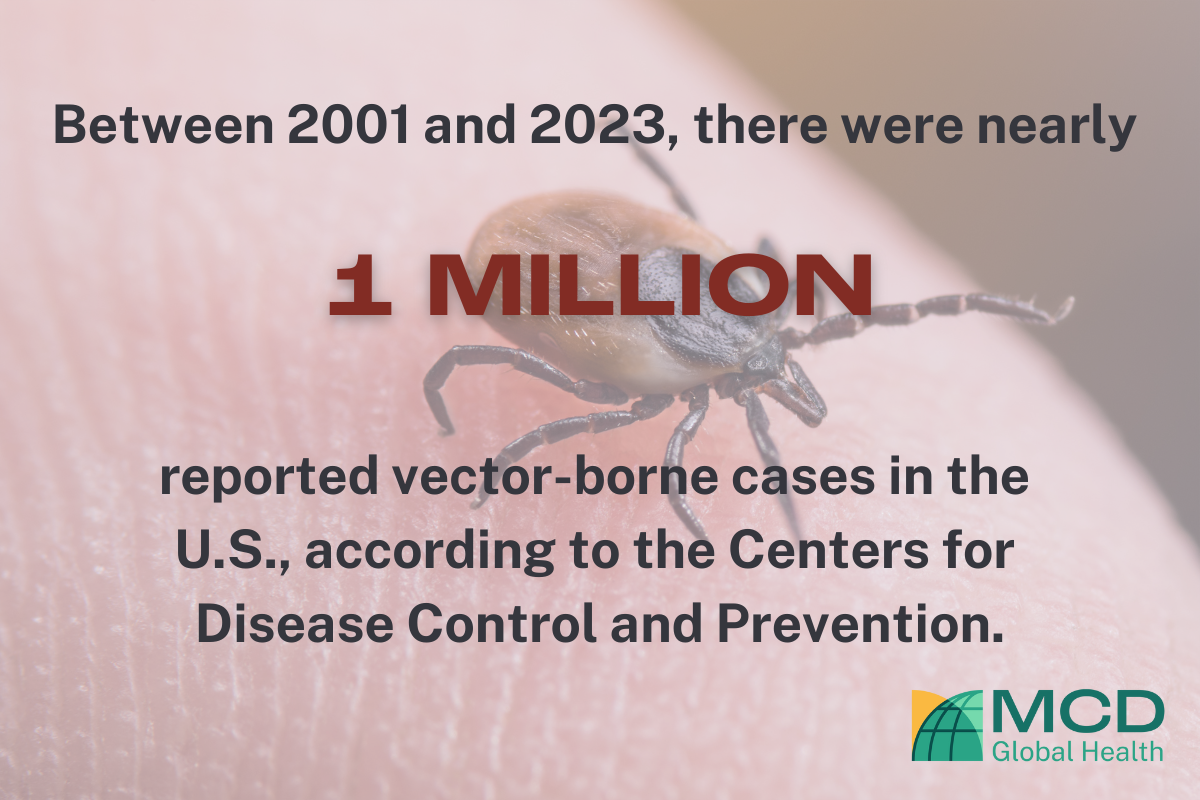CDC Releases U.S. Vector-borne Disease Public Health Strategy
May 1, 2024

MCD Global Health applauds the release of “The National Public Health Strategy to Prevent and Control Vector-Borne Diseases in People,” an assessment of the challenges and opportunities in protecting the health and well-being of people from vector-borne diseases (VBDs).
This strategy document is the result of conversations across six departments and 17 agencies, including the U.S. Centers for Disease Control and Prevention, Department of Agriculture, Department of Health and Human Services, and Environmental Protection Agency.
There were nearly 1 million reported VBD cases in the U.S. between 2001 and 2023 due to multiple mosquito-borne disease outbreaks and geographic spread of tickborne diseases.
Each year, 90% of reported VBD cases are tickborne diseases with Lyme disease at the top. The total cost of diagnosed Lyme diseases in the U.S. ranges from $345 million to $968 million a year. West Nile virus is the leading cause of mosquito-borne disease in the U.S., carrying 83% of all domestic mosquito-borne diseases a year in the U.S.
Experts believe the factors driving the emergence and increased transmission of VBDs include changing land-use patterns, and global travel and trade.

Because we live in a globally connected society, it is also important to establish complementary international capabilities to mitigate the risk of VBDs.
“More often now, you see stories about Lyme disease increasing or malaria cases starting to take hold in certain U.S. states. With the changing, warming climate and increased globalization, no location is safe from these diseases,” said Chris Schwabe, Ph.D., president and CEO of MCD (image at right). “At MCD, we have worked in this realm for many decades and are ready to support DHHS, as well as state and local health departments and other programs and institutions in combating VBDs domestically and internationally.”
As the report states, it is vital to better understand exposure to VBDs, diagnose VBDs, improve our ability to prevent and control VBDs, develop treatments, and create tools to enhance our ability to respond to VBD threats.
With this year’s tick and mosquito seasons quickly approaching on top of a mild winter season in much of the U.S., it is more important than ever to take precautions in preventing VBDs. This includes:
- Wearing long sleeves and pants while outdoors.
- Applying insect repellent to exposed skin, specifically products that contain DEET, picaridin (known as KBR 3023 and icaridin outside the U.S.), IR13535, oil of lemon eucalyptus (OLE), para-menthane-diol Z(PMD), or 2-undecanone.
- Apply permethrin to clothes worn in tick areas or purchase clothes pre-treated with permethrin (never apply permethrin directly to skin).
- Discarding any standing water in yards to prevent mosquito-breeding grounds.
- Checking clothing and skin for ticks frequently and removing attached ticks as quickly as possible.